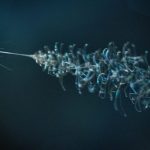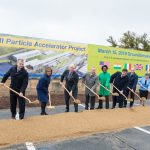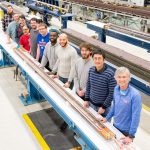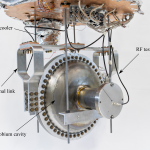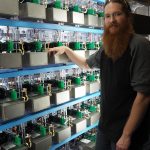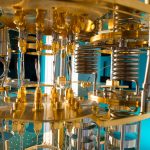Fermilab scientists are preparing for future, high-power particle beams with a technological advance inspired by spinning sugar. It’s a new type of target — the material that beams collide with to produce other particles, such as neutrinos. The target is designed to be able to withstand the heat from high-intensity beams, expanding the potential of experiments that use them. Researching this new patent-pending technology already has led to a TechConnect Innovation Award and might have applications in the medical field.
accelerator technology
Scientist Jean-Paul Carneiro and collaborators in France are setting the stage for one of the world’s first autonomous particle accelerators. They will incorporate the world’s leading code for computing the dynamics of particle beams into a Fermilab prototype. Funding is provided through the FACCTS program, which fosters productive partnerships between Chicago-based and French researchers.
On March 15, Fermilab broke ground on PIP-II, a major new particle accelerator project at Fermilab. Dignitaries from the United States and international partners celebrated the start of the project at the groundbreaking ceremony. The PIP-II accelerator will power the long-term future of the laboratory’s research program, including the international Deep Underground Neutrino Experiment and a suite of on-site experiments.
What if you could accelerate particles to higher energies in only a few meters? This is the alluring potential of an up-and-coming technology called plasma wakefield acceleration. Scientists around the world are testing ways to further boost the power of particle accelerators while drastically shrinking their size.
The U.S. Department of Energy has approved the scope, cost and schedule for the U.S. LHC Accelerator Upgrade Project and has given the first approval for the purchase of materials. This project brings together scientists, engineers and technicians from national laboratories — such as Fermilab, Brookhaven, Berkeley, SLAC and Jefferson labs — to develop two cutting-edge technologies to advance the future of both the Large Hadron Collider and broader collider research.
From IEEE Spectrum, Jan. 30, 2019: If realized, the Future Circular Collider will produce magnetic fields nearly twice as strong as the LHC and accelerate particles to unprecedented energies of 100 teraelectron volts, compared to the Large Hadron Collider’s energies of 13 TeV. Whereas the magnetic system at the LHC can achieve strengths of 8.3 teslas, the FCC system would be able to achieve 16 T.

